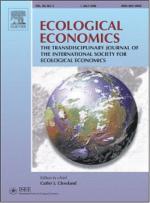|
This section contains 279 words (approx. 1 page at 300 words per page) |
Heterotrophs (from Greek heteros = other or different, trophos = feeder) are organisms that are not able to make their own food. They must ingest or absorb food produced by other organisms. Therefore, the heterotrophs rely on other organisms for their nutrition. Heterotrophic organisms include animals, fungi, and some single-celled protozoa (e.g., ameba, paramecia) and bacteria. While autotrophs make their own food by converting inorganic nutrients into organic forms, heterotrophs cannot do this. Heterotrophs require most nutrients in an already produced, organic form. They use these nutrients both as a source of energy and as building blocks to form cell and body parts. In a food web the heterotrophs are the consumers. There are many different types of heterotrophs in a food web, depending on what they consume. If they ingest autotrophs (producers), they are known as herbivores (primary consumers). Some heterotrophs eat other heterotrophs. These are the carnivores (secondary or higher level consumers). Predators, which capture live food, and scavengers, which eat already dead food, are two types of carnivores. Omnivores are heterotrophs that eat both autotrophs and other heterotrophs. Decomposers, which break down organic material into an inorganic form usable by plants, are also examples of heterotrophs. One hypothesis about the evolution of life on Earth states that the first living cells were heterotrophs. These primitive organisms absorbed or ingested simple organic molecules for use as energy and building blocks. When competition for these organic molecules increased, those organisms that could use alternative sources of energy, such as the sun or inorganic chemical reactions, to make their own organic molecules were better able to survive and reproduce. Thus, according to this hypothesis, autotrophs evolved from heterotrophs.
|
This section contains 279 words (approx. 1 page at 300 words per page) |


